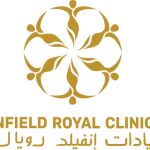Understanding Rhinoplasty
What is Rhinoplasty?
Rhinoplasty is a surgical procedure performed to reshape the nose for aesthetic or functional reasons. It can address various concerns such as nasal asymmetry, a prominent dorsal hump, or breathing difficulties caused by structural abnormalities.
Reasons for Nasal Reconstruction
Nasal reconstruction may be necessary due to congenital defects, trauma, or medical conditions affecting the nasal structure. Rhinoplasty offers a solution to restore nasal symmetry, improve breathing, and enhance facial aesthetics.
Preparing for Rhinoplasty
Initial Consultation
The first step towards rhinoplasty involves a thorough consultation with a board-certified plastic surgeon. During this appointment, the surgeon evaluates the patient's nasal anatomy, discusses their goals and expectations, and outlines the surgical plan.
Medical Evaluation
Before undergoing rhinoplasty, patients undergo a comprehensive medical evaluation to ensure they are suitable candidates for surgery. This assessment includes a review of medical history, physical examination, and possibly diagnostic tests.
The Rhinoplasty Procedure
Surgical Techniques
Rhinoplasty can be performed using either an open or closed approach, depending on the complexity of the procedure and the surgeon's preference. The open technique involves making an incision across the columella, while the closed technique involves incisions inside the nostrils.
Anesthesia Options
Rhinoplasty is typically performed under general anesthesia to ensure patient comfort and safety during the procedure. In some cases, local anesthesia with sedation may be sufficient, particularly for minor revisions.
Recovery Process
Post-Surgery Care
After rhinoplasty, patients are advised to follow post-operative instructions provided by their surgeon diligently. This may include wearing a nasal splint, avoiding strenuous activities, and taking prescribed medications to manage discomfort and prevent infection.
Expected Results
The initial results of rhinoplasty may be obscured by swelling and bruising, but as the healing process progresses, patients will notice gradual improvements in nasal appearance and function. Full recovery can take several weeks to months, during which time the final outcome becomes apparent.
Benefits of Rhinoplasty
Improved Breathing
One of the primary benefits of rhinoplasty is the correction of structural issues that impede nasal airflow. By addressing nasal septum deviations, nasal valve collapse, or other obstructions, rhinoplasty can significantly improve breathing.
Enhanced Facial Harmony
Rhinoplasty not only corrects functional concerns but also enhances facial aesthetics by harmonizing the nose with other facial features. A well-proportioned nose can contribute to a more balanced and attractive appearance, boosting self-confidence.
Potential Risks and Complications
As with any surgical procedure, rhinoplasty carries inherent risks, including bleeding, infection, and adverse reactions to anesthesia. Additionally, there is a possibility of unsatisfactory results or the need for revision surgery.
Choosing the Right Surgeon
Credentials and Experience
When considering rhinoplasty, it is essential to select a board-certified plastic surgeon with extensive experience performing nasal reconstruction procedures. Reviewing the surgeon's credentials, training, and before-and-after photos can help assess their expertise.
Patient Reviews and Testimonials
Reading reviews and testimonials from previous rhinoplasty patients can provide valuable insights into the surgeon's skill, bedside manner, and overall patient satisfaction. Personal recommendations and referrals from trusted sources can also guide the decision-making process.
Cost Considerations
Factors Affecting Cost
The cost of rhinoplasty varies depending on factors such as the surgeon's fee, facility fees, anesthesia costs, and the complexity of the procedure. Additional expenses may arise for pre-operative tests, post-operative medications, and follow-up appointments.
Insurance Coverage
In some cases, rhinoplasty may be covered by insurance if it is deemed medically necessary to address breathing problems or correct congenital abnormalities. However, purely cosmetic rhinoplasty procedures are typically not covered, and patients are responsible for covering the expenses.
Alternatives to Rhinoplasty
In certain cases where nasal concerns are minor or patients prefer non-surgical options, alternatives to rhinoplasty may be explored. These include dermal fillers for nasal augmentation, injectables to refine nasal contours or non-invasive treatments for skin irregularities.
Success Stories
Sharing success stories of individuals who have undergone rhinoplasty can offer reassurance and inspiration to those considering the procedure. Hearing firsthand accounts of transformative results and improved quality of life can instill confidence in the decision to pursue nasal reconstruction.
Conclusion
Rhinoplasty in Riyadh is a highly customizable surgical procedure that can address a wide range of nasal concerns, from functional impairments to aesthetic dissatisfaction. By restoring both form and function to the nose, rhinoplasty offers patients the opportunity to achieve a more harmonious facial appearance and improved overall well-being.






Comments